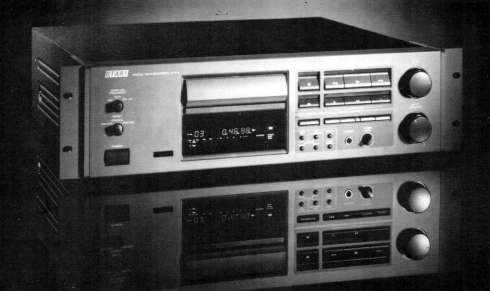
by Dave Oliwa
It's digital out there in radioland. But even as terms like "gigabyte" and "undo" permeate the audio recording industry, there is still a lot of room for the DAT tape format. After all, the quality, cost, convenience, and wide distribution of DAT is hard to beat. Archiving your DAT tapes doesn't require a room, just a desk drawer. Even if it's a small desk drawer, you can store a lot of audio. For shipping, a DAT inside a Bubblepak envelope inside a FedEx Letter is still one hell of a bargain. And, if you want to make your own CD, you can easily make the CD master right in your own studio (as long as you've got a DAT machine that can record with a 44.1 sampling frequency). Of course, the trend is to put everything onto a computer "platform," but no one ever lost their entire DAT audio project from a power interruption or a flaky video driver. There simply are no General Protection Faults in DAT tape. Maybe the DAT's portability and exceptional value will change when a Zipdrive disk can store at least two hours of full-bandwidth digital audio information at the same price, but that's a few years away. The best value in recording (digital or analog) was, is, and will be DAT for some time to come. Since the manufacturers know this, it's full speed ahead with new and improved DAT machines!
For many stations, Otari and tape recording have been synonymous. Otari is not one to be left behind in recording technology, and their new DTR-8 Digital Tape Recorder is featured on the RAP Test Drive this month.
The box is Otari gray with black highlights and smoked display. Two bat-handled knobs above the power switch on the left of the front panel select the audio input between active balanced analog, S/PDIF coaxial digital, and AES/EBU cannon connector digital; and sampling frequencies of 32, 44.1, and 48K (the 32K setting allows a "long play" mode with half the normal tape speed—do the math).
The display is just left of center with the tape tray above. With a button press or a light push on the tray, it goes all the way inside, protected by a spring-loaded door. The door will pull down when a tape is inside, giving access to the tape's safety tab. There is plenty of room to stick a pen or one of your small, green-handled screwdrivers in to flip the safety tab closed if it's open (or open if it's closed). The switch that prevents accidental erasure is nowhere to be seen. I suspect it touches the DAT case when it is loaded up, then hides out until needed again! After changes to the safety tab "in the tray," the tray button must be pressed twice (so the DTR-8 will check the safety tab), but that's okay—how many times have you hit Record on your DAT machine, then did the Dr. McCoy one-raised-eyebrow routine, opened the drawer, pulled out the tape, closed the safety tab, put in the tape, closed the drawer and tried again?

